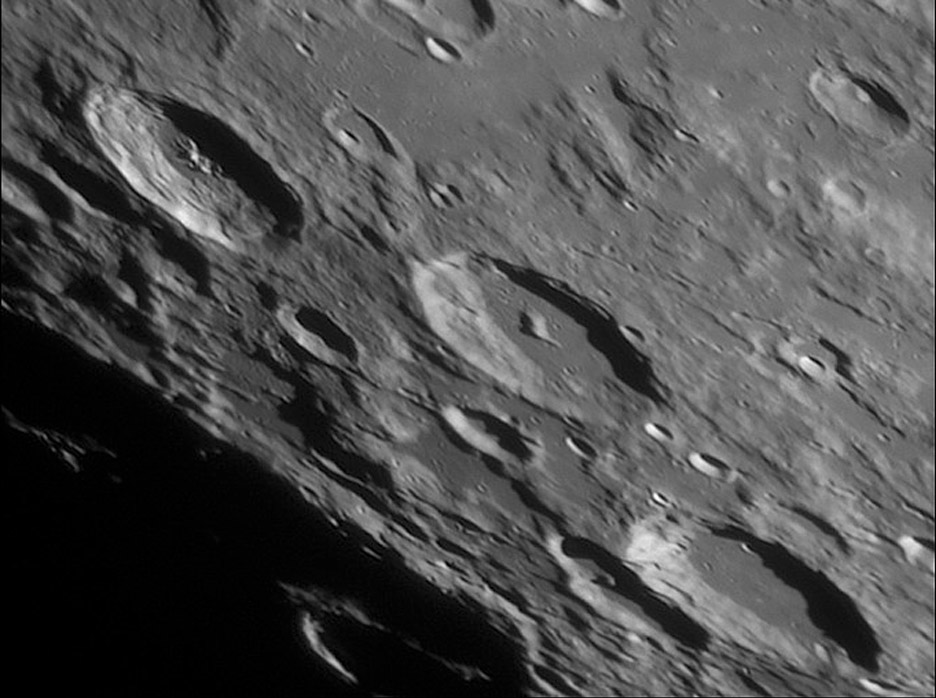
image by Bart Declercq, Zottegem, Belgium
Like-sized, nearby craters invite comparisons. Look at this triplet and see what you can say about the craters’ morphologies (the way they look) and their relative ages. Come back to finish reading when you’ve studied them……
OK, from the top (north) these three are Zucchius, Bettinus and Kircher, and they have similar diameters of 64, 71 and 73 km. They are arranged from youngest to oldest. Zucchius is a ray crater and has impact melt deposits on its north and east - sure signs of a youthful age. It also has well-defined terraces and no significant subsequent impacts. Bettinus is the next oldest, its terraces have been rounded (by seismic activity from subsequent impacts?), and its floor is covered with a smooth material that buried formational roughness. Notice also that there are a few craters on its rim and floor. Moving south to Kircher we find a somewhat more battered feature with a number of craters cutting its rim and a smooth floor that completely hides the central peak. This aging sequence is based on the assumption that when they were formed Kircher and Bettinus looked like Zucchius.
Technical Details
Dec 21, 2007, 00h05m UT. Celestron C9.25@F/20, DMK31AF + Green filter.
Related Links
Rükl plate 71
Bart’s Astronomy website
A broader view
COMMENTS?
Click on this icon File:PostIcon.jpg at the upper right to post a comment.



